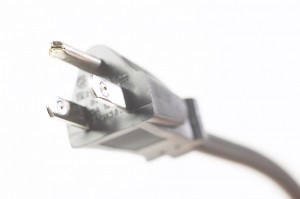What happens when we pull the plug
There is another kind of digital divide: when kids go from a “connected” learning environment back to a traditional classroom. Yesterday I visited a sixth grade classroom filled with students about to make an uncertain (and possibly sad) transition. Their current class is connected. They know the experience of collaborating and learning with students from schools across the country. For the past year, they have lived their roles in MySciLife (more info here). They know how to approach a question, look for information both digitally and in print, learn, then reshape what they have learned into a creative and personal connection. They talk about the challenge of taking a set of knowledge and an unlikely prompt that forces them to look at things from within a different role: as a force of nature, an obscure animal, or a weather phenomenon. They talk about how these creative challenges, nestled into an online community, have helped them learn from what other students have said and by asking about or commenting on others’ ideas. They flow smoothly from online tool to tool with the help of self-taught student “experts” within their class or by “teching it out” on their own. They stop and think about which tool best suits the task. These kids are connected at so many levels.

One of the students began talking about next year (a favorite topic among kids about to graduate into a new building). He was talking about what he would do in MySciLife next year. I did not have the heart to tell him that he won’t be in MySciLife next year. Why? First, because MySciLife is a limited pilot for now. More disturbingly, who knows whether he will have a science teacher who is as comfortable with breaking out of the usual teaching patterns and putting students in charge of their learning (helped by technology, of course). Teachers operate at such widely varying levels of technology comfort and availability that — even within the same district — a student may move back and forth from connected to disconnected and back again during the same school day or from year to year. The digital faultlines could cause a learning earthquake for anyone.
I wonder how long it will be before kids can expect a minimal level of “connectednesss” no matter where they are learning. I wonder how long it will take the slowly moving plates to stop dangerously rubbing against each other and settle to support learning without the divides. Kids are resilient and adjust to many teaching and learning approaches, but we owe them greater consistency. Think about the kids who suffer when we pull the plug. Then ask yourself how you can help a tech-timid colleague.



